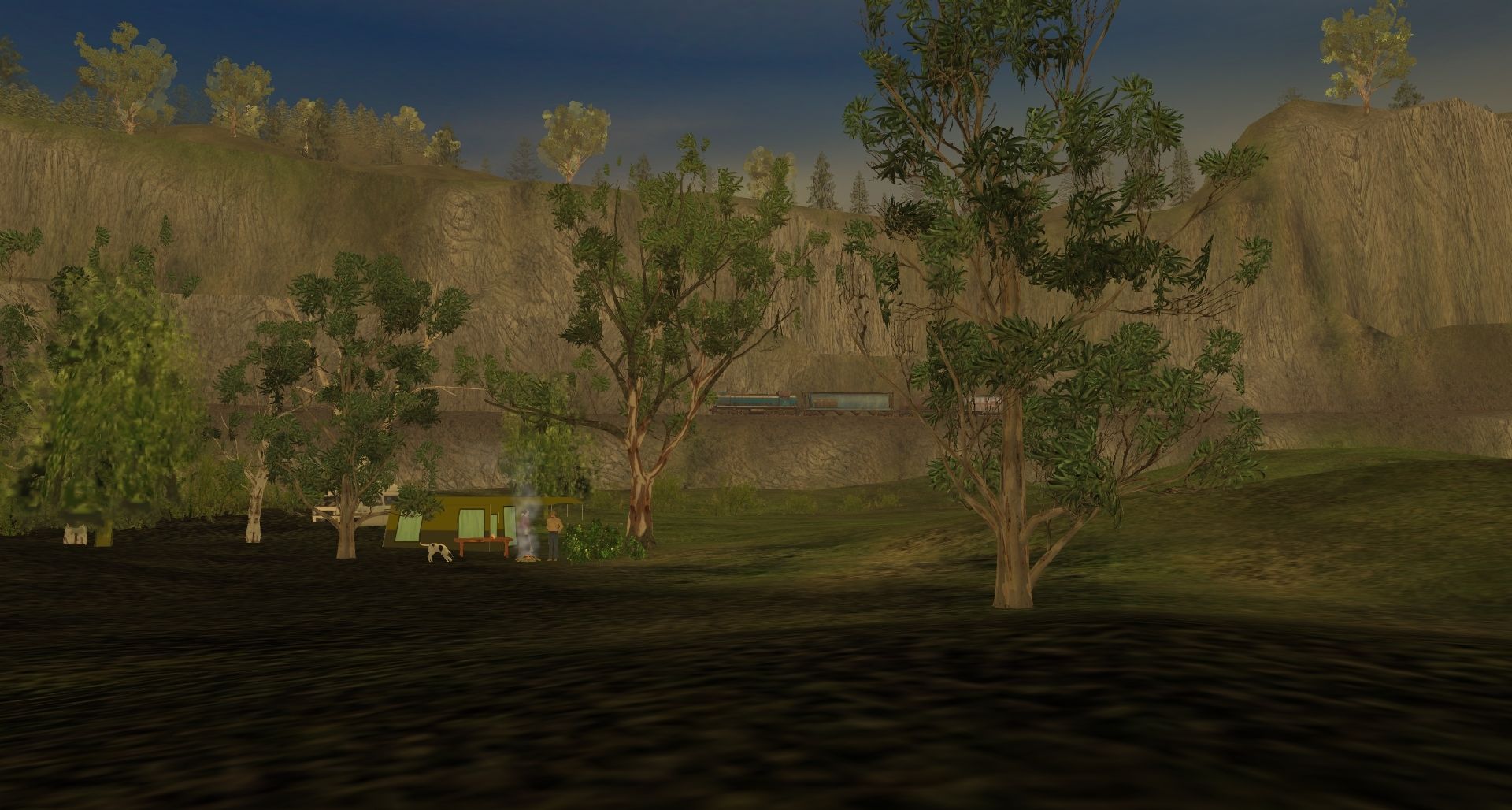Hey guys
I tried, but I am not doing too well
When I drive routes (the excellent stuff you guys create), I always enjoy the drive, and I never pay attention to the routes, or how they were built.
Now that I am building my own route, I am getting stuck with the fundamentals. I started with one, then two, then three baseboards... so on.
Then, I shape my landscape, either by heightmaps, or with the moulding tools built-in (this is a fictional route).
Next, the problem, is my textures.
Would someone like share their strategy when starting with an unpainted base board?
What I do, because I thought it to make sense, is to flood fill the board with my base texture (a basic biome... say dry grass).
Next, Ill start adding my greens to areas where it makes sense (downflow areas from mountains or hills, low lying areas). Ill add rock on faces, or in ditches, etc.
But what I end up with is something that looks like an expired salad.
For one, some of the textures don't tile (the stuff included is mostly terrible), so a base board flood-fill, leaves a deterministic grid looking pattern
Secondly, applying painting to specific areas is a tricky thing to judge, and I don't really have a clue to do this. Especially with the diagonal patterns on ballast that is not in a straight line.
I started reading the route builders tips threads and wiki page, i have a grasp on most of the tips, the rotations, etc. But something is missing.
I tried, but I am not doing too well
When I drive routes (the excellent stuff you guys create), I always enjoy the drive, and I never pay attention to the routes, or how they were built.
Now that I am building my own route, I am getting stuck with the fundamentals. I started with one, then two, then three baseboards... so on.
Then, I shape my landscape, either by heightmaps, or with the moulding tools built-in (this is a fictional route).
Next, the problem, is my textures.
Would someone like share their strategy when starting with an unpainted base board?
What I do, because I thought it to make sense, is to flood fill the board with my base texture (a basic biome... say dry grass).
Next, Ill start adding my greens to areas where it makes sense (downflow areas from mountains or hills, low lying areas). Ill add rock on faces, or in ditches, etc.
But what I end up with is something that looks like an expired salad.
For one, some of the textures don't tile (the stuff included is mostly terrible), so a base board flood-fill, leaves a deterministic grid looking pattern
Secondly, applying painting to specific areas is a tricky thing to judge, and I don't really have a clue to do this. Especially with the diagonal patterns on ballast that is not in a straight line.
I started reading the route builders tips threads and wiki page, i have a grasp on most of the tips, the rotations, etc. But something is missing.

